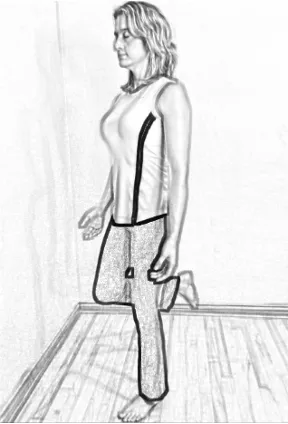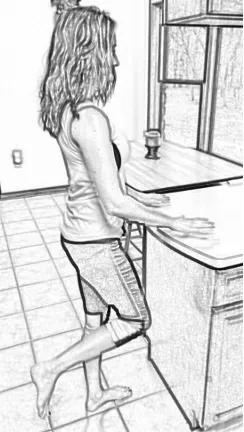Being Aware of Your Body in Space
If you are in pain, or easily get injured, you may need to work on your proprioception (the awareness of your body in space without using your vision or inner ears). The body is not quite the same after an injury, no matter how minor, so I always have my patients check their proprioception.
On the flip side, your body is not the same after a chiropractic adjustment. Yes, your body is better for the adjustment. It should move better and feel better. But if you do an activity afterwards, you body may move differently than you expect. Your legs may move farther, being more mobile, causing you to mis-step. So I usually have my patients check their proprioception after an adjustment, especially if it is their first adjustment and they have been stiff and sore for a long time.
Proprioception allows you to correct off-balance movements and prevent falls caused by imbalance. Jarring actions of even catching yourself from falling can re-exacerbate your pain. Strengthening your awareness of where your body is in space will make you less vulnerable to any type of re-injury.
You can test your proprioception by standing on one foot and closing your eyes (Figure 9-17). With your eyes closed, you can’t rely on your vision to tell you where you are in space. Because you are not moving, your inner ears can’t help you either. You are relying solely on your proprioception.

Figure 9‑17: Testing my proprioception.
If any bone in your body is misaligned, you will have a difficult time standing on one foot with your eyes closed because your brain automatically sends signals to your muscles to make minor adjustments to keep your body upright. If your body isn’t aligned as your brain expects, the muscle corrections will actually be incorrect and you will start wobbling.
If you can’t stand on one leg with your eyes closed for more than thirty seconds (three minutes on a wobble board if you are in sports), then you are more prone to injuries because you are visually dependent for your balance. If you get visually distracted for a short period of time, you will likely misjudge where you are in space and potentially get hurt (misplace your foot and roll your ankle for example).
Proprioception Exercise
Most people lose their balance as they age. I attribute this to the fact that many people do not exercise their balance. How often do you stand on one foot with your eyes closed? If you don’t use it, you lose it.
In addition to relying on your vision to tell you where you are in your surroundings, you have mechanisms in your inner ears that tell your brain how you are moving. Nerve fibers throughout your body give your brain even more input as to where you are in space.
To exercise your body’s proprioception, you need to remove two indicators of your body’s position: sight and detection of movement by your inner ears. You can do this by closing your eyes (to remove the visual reference) and standing still on one leg (without movement, your inner ears aren’t much assistance). You should do this by a wall or with your hands hovering over a counter so you can prevent yourself from falling if you start to wobble too much (Figure 9-18).


Figure 9‑18: Working on proprioception while hovering my hands over a counter, eyes closed, and standing with one foot off the floor.
You should be able to do this for at least thirty seconds per leg (three minutes if you are an athlete). If you cannot, then you are vulnerable to injury if you get visually distracted and misstep. Good proprioception allows you to catch yourself from falling, making you less likely to twist an ankle (or, when you’re elderly, break a bone). If you don’t practice your proprioception, you are more likely to fall, resulting in injury.
Everyone should do this exercise every day. People sit too much, often with poor posture. If you don’t fight the effects of sitting, you become more bent and stiff with time. Your brain doesn’t notice this slow process, and when you reach that tipping point, you start misjudging where you are in space to such a degree that you become clumsy. I have had patients who started having multiple falls in situations where they shouldn’t, for example, when going from carpets to hard flooring. Once they worked on their proprioception, they didn’t fall as often (if at all).
Once you can comfortably stand on one leg with your eyes closed for thirty seconds, you may be able to do this exercise next to a wall, making it easier to do throughout the day.
Good proprioception, good awareness of where you are in space, will decrease your risk of injury, so will decrease your risk of re-exacerbation of your pain. Good proprioception is part of staying well.
Want to see what else we would advise for you?
Why wait?
to schedule an appointment.
To learn more about how we treat here at Drummond Chiropractic, CLICK HERE.
To go back to our home page, CLICK HERE.
Drummond Chiropractic, LLC
Best Chiropractors in Bloomington
565 N Walnut St
Bloomington, IN 47404
(812) 336 - 2423
